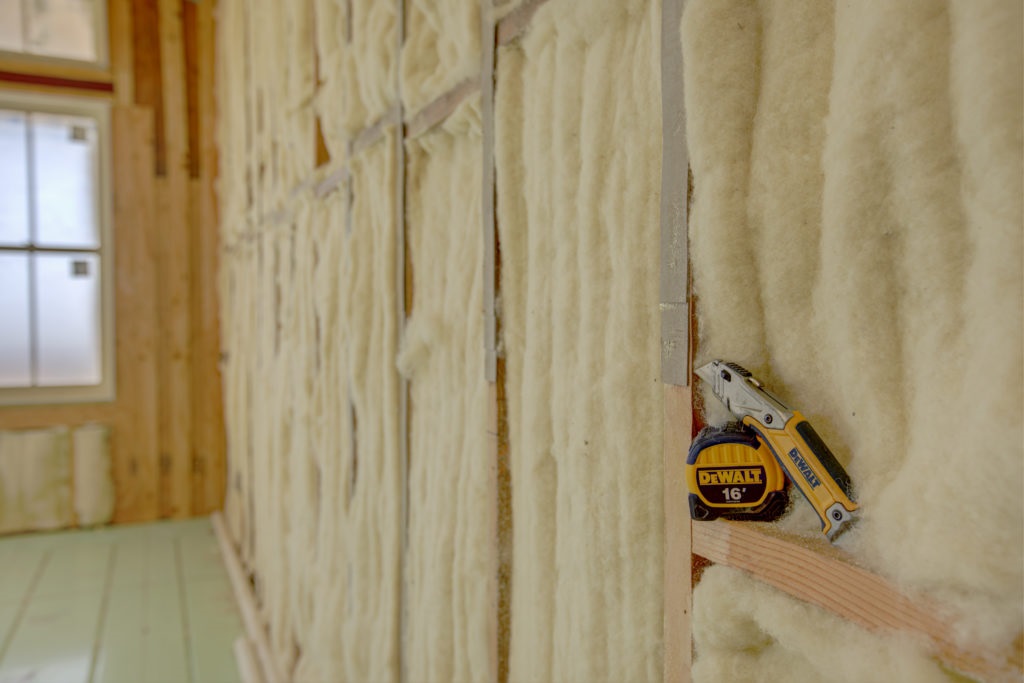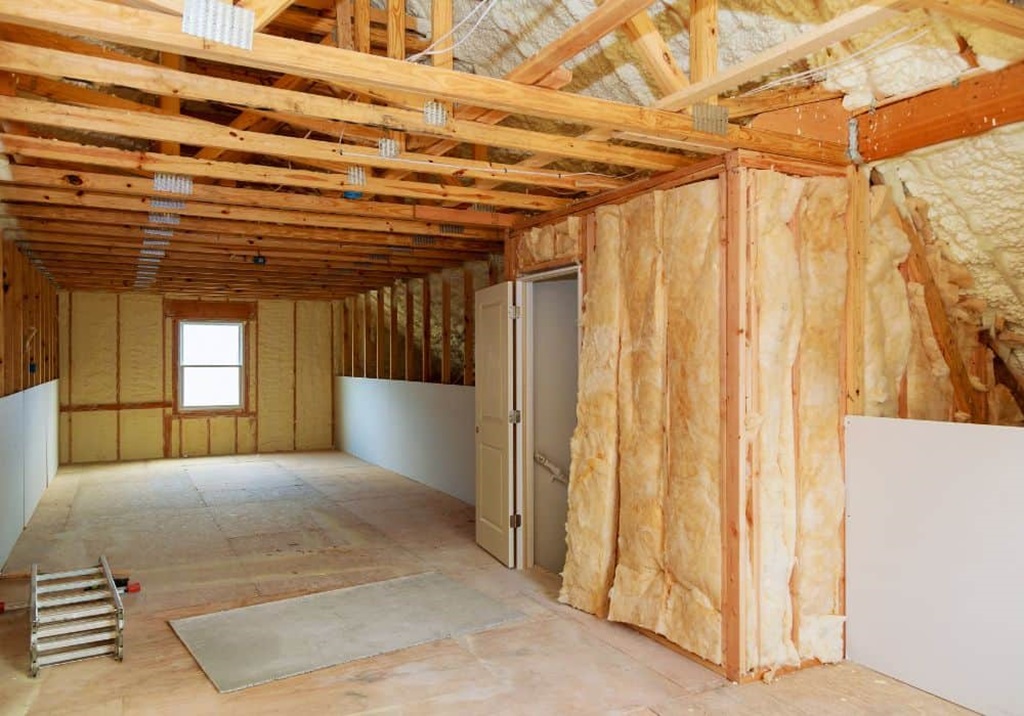When it comes to insulating your home, two of the most common insulation ratings you’ll encounter are R13 and R15. But what do these numbers mean, and how do they compare in terms of performance and cost-effectiveness?
In this comprehensive guide, we’ll break down the nitty-gritty details of R13 and R15 insulation. You’ll learn the basics of insulation ratings, the core difference between r13 and r15 insulation, and which insulation type may be better for your specific needs and budget.
What Do R-Values Mean?
Before diving into the specifics of R13 and R15, it’s helpful to understand what R-values are and how they work. R-value is a measure of an insulation’s ability to resist heat flow. The higher the R-value, the better the insulation’s effectiveness.
R-values are calculated per inch thickness of insulation. So a material with an R-value of 13 per inch would have an R-value of 26 with two inches of insulation. The thicker the insulation, the higher the overall R-value.
The recommended minimum R-values for insulation vary by climate zone. Warmer regions like the Southern United States may only require R13 walls and R30 attic insulation. Colder Northern climates often call for R20+ walls and R40+ attics.
When comparing two products, the one with the higher R-value per inch (or R-value per dollar spent) will provide better thermal performance.
R13 Insulation Overview
- R13 batt insulation has an R-value of around 13 per inch. This means a standard 3.5-inch thick batt has an overall R-value of 13 x 3.5 = 45.5.
- The most common types of R13 insulation are fiberglass batts and mineral wool batts. These are flexible, and available in rolls or pre-cut batts.
- R13 batts are commonly used to insulate exterior walls in many homes. They can also be used in floor/ceiling joist cavities.
- Pros of R13 insulation:
- Relatively affordable and accessible.
- Easy for DIY installation in stud wall cavities.
- Available unfaced or with kraft paper vapor barrier facing.
- Cons of R13 insulation:
- Moderate insulating value per inch compared to higher density insulation.
- Can compress over time, reducing effectiveness.
- Loose fiberglass and mineral wool fibers may cause skin irritation during handling.
R15 Insulation Overview
- R15 batt insulation provides an R-value of around 15 per inch. A 3.5-inch thick batt will have an overall R-value of 15 x 3.5 = 52.5.
- The most common types of R15 insulation are fiberglass batts and rock wool batts. These have a higher density than R13 products.
- R15 batts are well suited for exterior walls in colder climates. They can also be used in attic floors and other building cavities.
- Pros of R15 insulation:
- Provides a higher R-value per inch compared to R13 insulation.
- Good for meeting higher insulation recommendations in colder climates.
- Can help improve energy efficiency and comfort.
- Cons of R15 insulation:
- Typically costs 15-30% more than R13 insulation.
- Dense batts can be slightly harder to cut and install neatly between studs or joists.
- Still has the potential for settled compression over time.
Directly Comparing R13 and R15 Insulation
Now let’s do a direct side-by-side comparison of R13 and R15 insulation:
Insulating Value
- R15 provides around 15% higher insulating value per inch compared to R13.
- To achieve the same overall R-value, R15 insulation can be installed thinner/less dense than R13 insulation.
Cost
- R15 generally costs 15-30% more than R13 insulation depending on brand.
- The additional cost may or may not pay off depending on your climate and utility costs. Do the math for your situation.
Installation
- R15 batts tend to be slightly denser and more rigid, which can make them a bit trickier to install neatly between studs or joists.
- R13 batts are usually more flexible and adapt more easily around obstructions. Easier for DIYers.
- Overall, installation is fairly comparable between R13 and R15.
Performance Over Time
- All fiberglass and mineral wool insulation will compress and settle slightly over time. Higher density R15 may resist compression marginally better.
- Both R13 and R15 need proper installation to minimize compression and maintain insulation value.
Irritation and Safety
- Loose glass/mineral wool fibers in both products can cause skin irritation during handling. Wear long sleeves, pants, gloves, eye protection when installing.
- No major differences in safety. Check manufacturer guidelines and take precautions for both products.
Environmental Impact
- Fiberglass and mineral wool insulation have relatively low embodied carbon compared to foam insulation.
- R15 may use slightly more material for an equivalent R-value. Not a major environmental difference.
Noise Reduction
- R15 insulation provides marginally better sound dampening due to higher density. But the difference is fairly small.
Where is R15 Insulation a Smart Investment?
Based on the comparison above, here are a few situations where choosing R15 over R13 insulation would be worth the extra investment:
- You live in climate zone 6 or higher (Northern states). The minimum recommendations are R20+ walls and R30+ attics.
- Your home has 2×4 stud walls. R15 allows you to achieve R20+ with just one batt.
- You want the highest practical R-value in walls/attic for maximum energy savings.
- You want to add sound-dampening ability in home theaters or bedrooms.
- You want an extra margin of insulation for exceptionally cold winters.
- You are renovating and want to maximize insulation with minimal new framing depth.
- The added cost of R15 is less than 5-10% of your total insulation budget (likely a reasonable upgrade).
When Might R13 Be the Better Choice?
Here are some situations where R13 insulation may make the most sense over R15:
- You live in climate zone 4 or lower (Southern states). Minimum recs are R13-R15 walls, R30 attic.
- Budget is an exceptionally important factor. R13 will provide good insulation at the lowest cost.
- You plan to install supplemental foam sheathing which will boost the overall wall R-value.
- Your framing depth cannot accommodate the slightly thicker R15 batts.
- You are insulating unfinished low-use spaces like crawl spaces or garages where minimum insulation is adequate.
- DIY project where easier handling and flexibility of R13 will be beneficial.
Key Takeaways on R13 vs R15 Insulation
Here are the key takeaways to understand when comparing R13 and R15 insulation:
- R15 has around 15% higher insulating value per inch compared to R13 insulation.
- R15 insulation will typically cost 15-30% more than an equivalent R-value of R13 insulation.
- For most applications, R15 is the better option in colder climates, while R13 is suitable in warmer locations.
- Consider your climate zone’s minimum recommendations and your total insulation budget when deciding.
- Proper installation for either insulation type is crucial to achieve the rated R-value and maximize performance over time.
- Minor differences like sound damping and handleability may factor into your decision but do not drastically change overall thermal performance.
Conclusion
The decision difference between r13 and r15 insulation ultimately depends on factors like climate, budget, existing framing depth, and noise considerations. In many cases, R15 provides better thermal resistance for the thickness and can help meet recommendations for colder regions. R13 remains a smart economical option, especially for warmer climates or where framing depth is limited.
Focus on proper installation and seam sealing for whichever insulation you choose – proper technique is key to achieving the full-rated R-value. Consider supplementing walls and attics with exterior foam sheathing or higher R-value air sealing products. Combining multiple layers and types of insulation provides the best defense against heat loss. With strategies like these, your home will stay warm, comfortable, energy-efficient, and free of surprises on the utility bill for years to come.
FAQs
Q: Can I mix and match R13 and R15 insulation in different parts of my house?
A: Yes, you can use R13 insulation in some areas and R15 in others. Just be sure each matches the recommended R-value for that part of the home. The attic, for example, often calls for a higher R-value than exterior walls.
Q: How long does fiberglass and mineral wool insulation last?
A: Properly installed, these insulations can last 50 years or more before needing replacement. Minor settling may occur but does not drastically impact performance. Keep insulation dry and undisturbed.
Q: Which is better, faced or unfaced insulation?
A: For fiberglass and mineral wool batts, faced insulation with a kraft paper or foil vapor barrier is typically recommended. Unfaced can also work if interior vapor control is addressed otherwise.
Q: Can I install R15 insulation over the existing R13 in my walls?
A: Yes, you may be able to supplement existing wall insulation by adding a layer of R15 over the top. This may require furring out the wall framing slightly.
Q: Is denser, higher R-value insulation always better?
Not always – there are diminishing returns as insulation density increases. Past a certain point, the cost of incremental R-value increases substantially. Find the “sweet spot” insulation levels for your climate zone without overspending.
Q: How should I determine the ideal insulation R-values for my home?
A: Consider your location’s climate zone, heating and cooling degree days, energy costs, and building style/age. Government and energy auditor recommendations provide a good starting point. Performing an energy audit can help dial in the most cost-effective insulation levels for your unique home.






